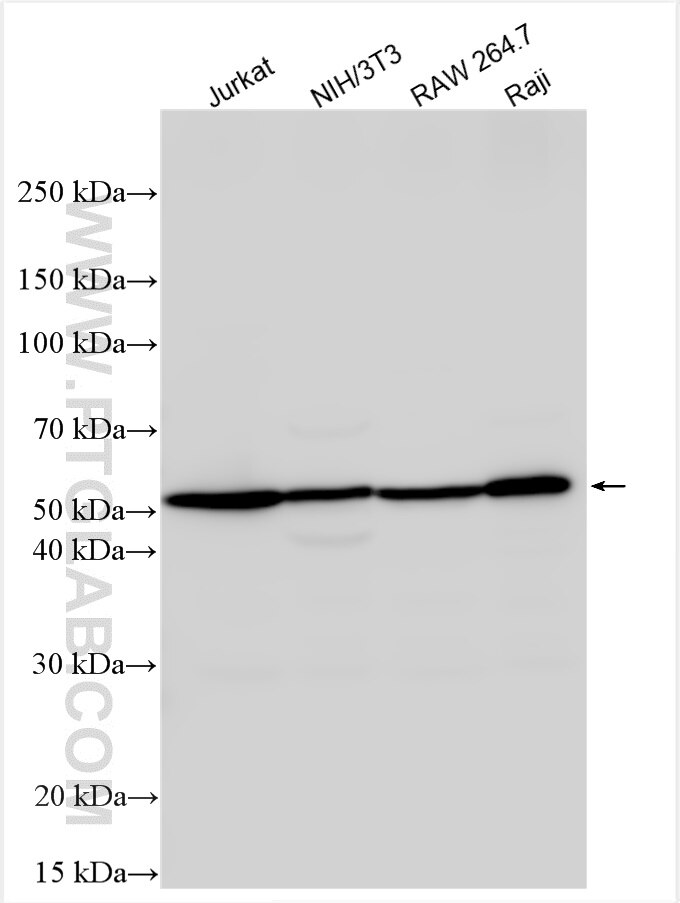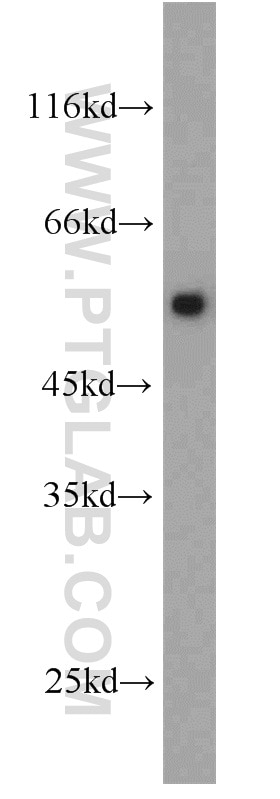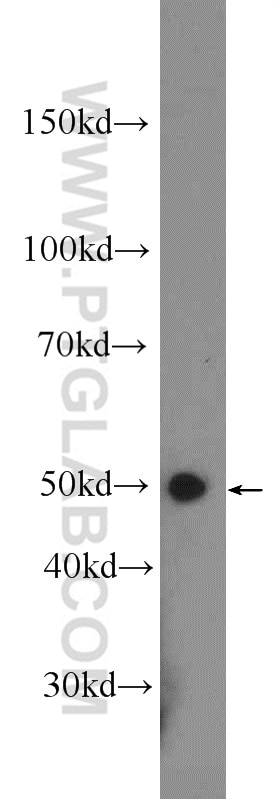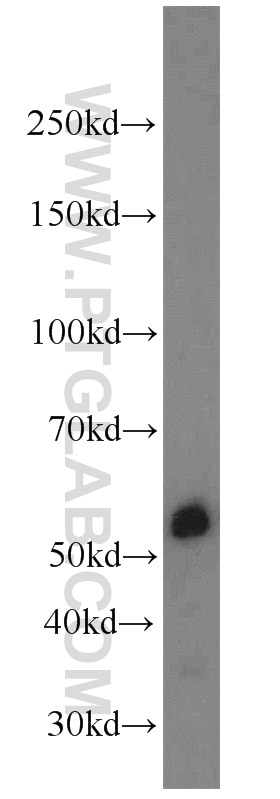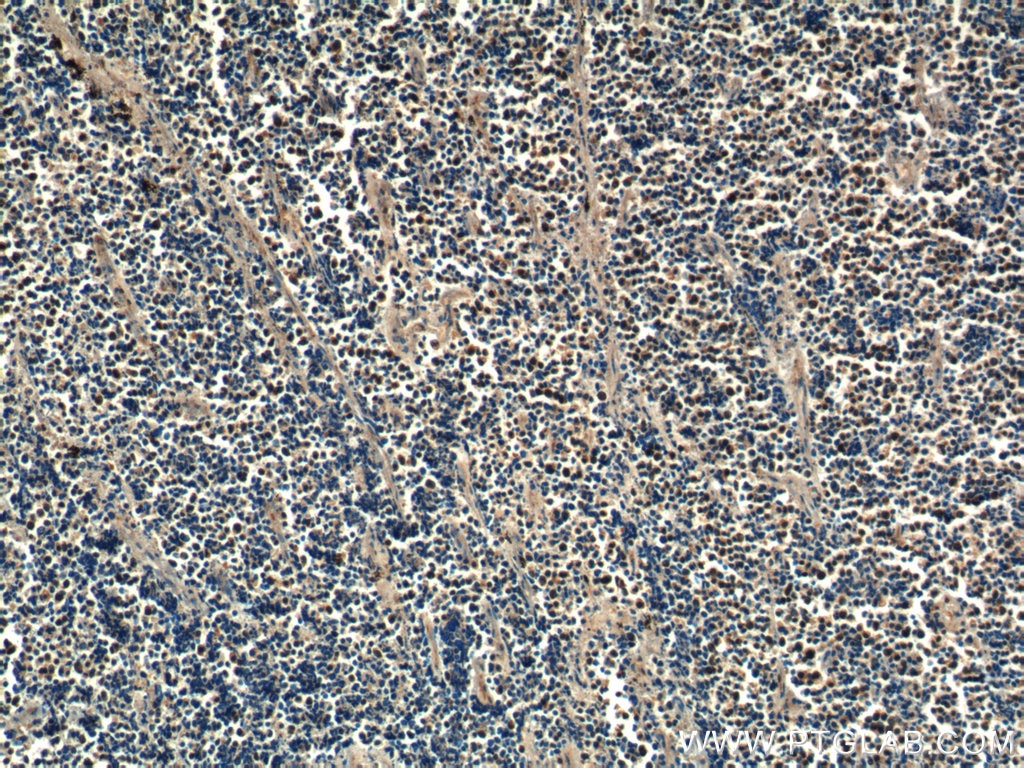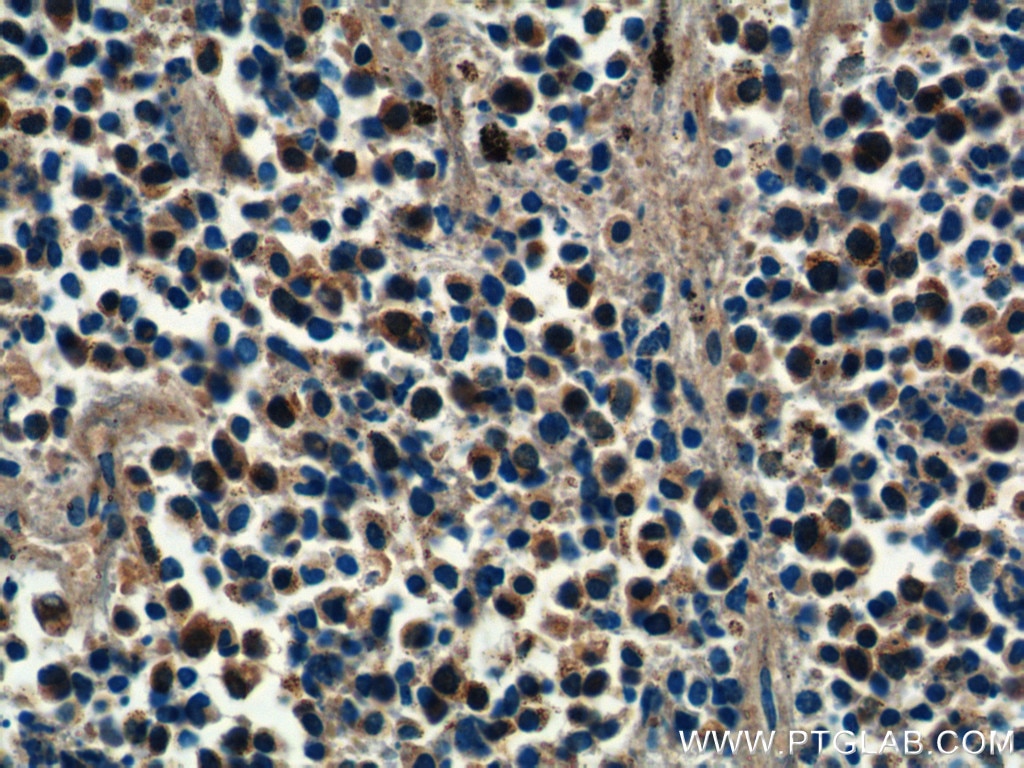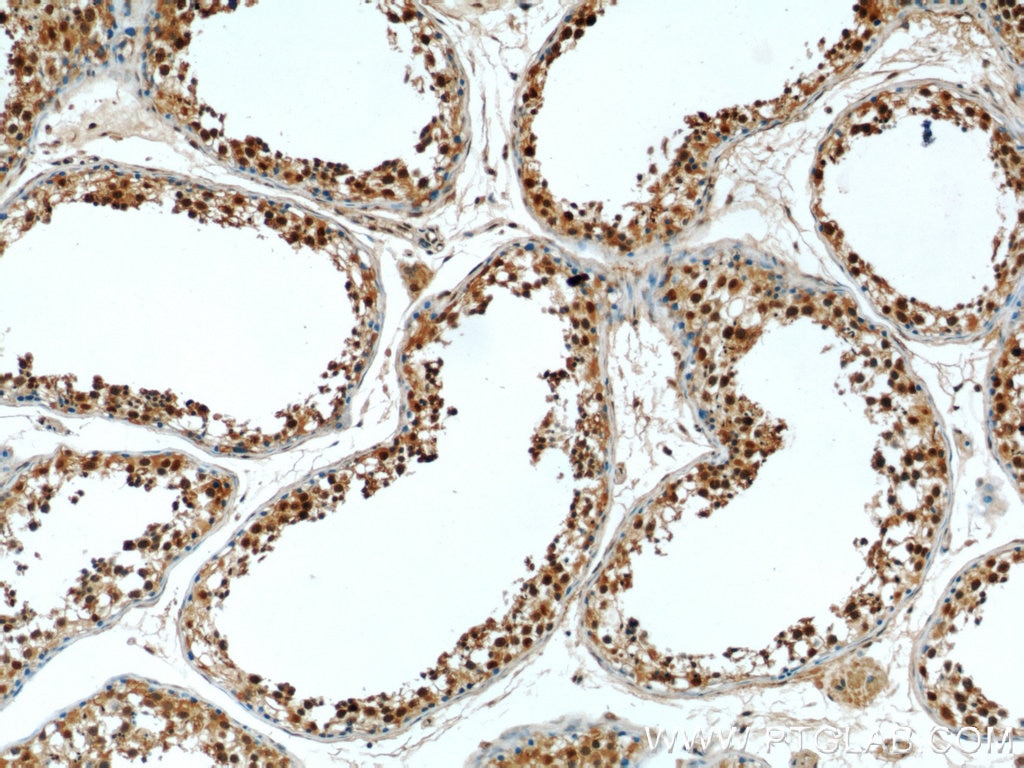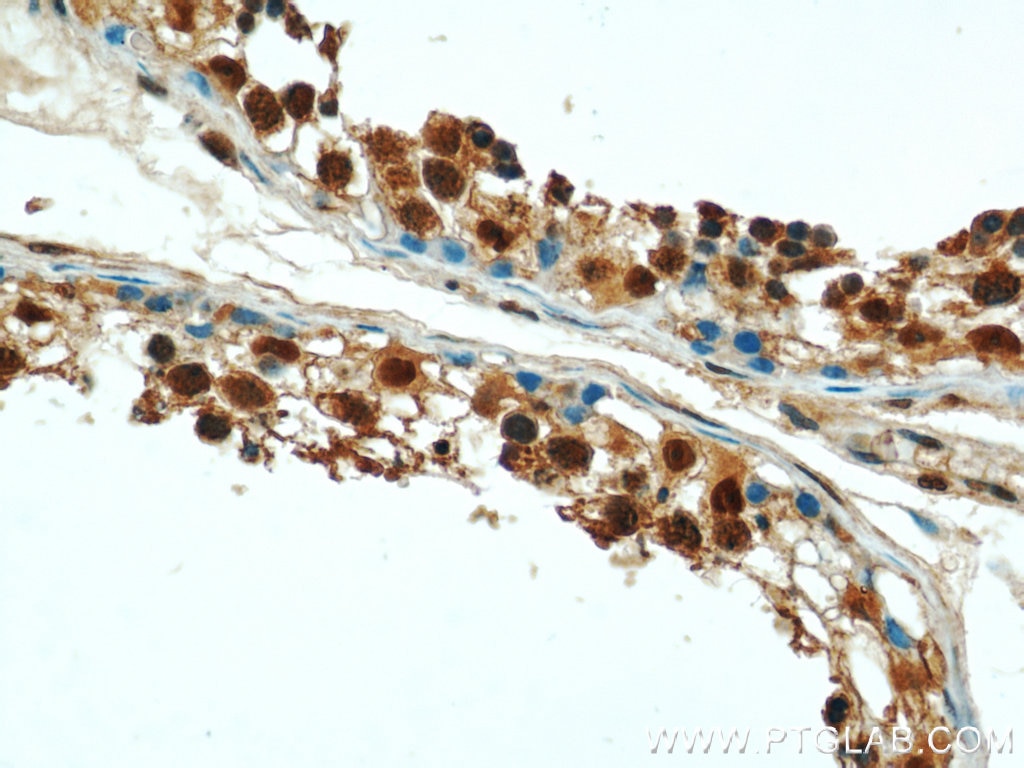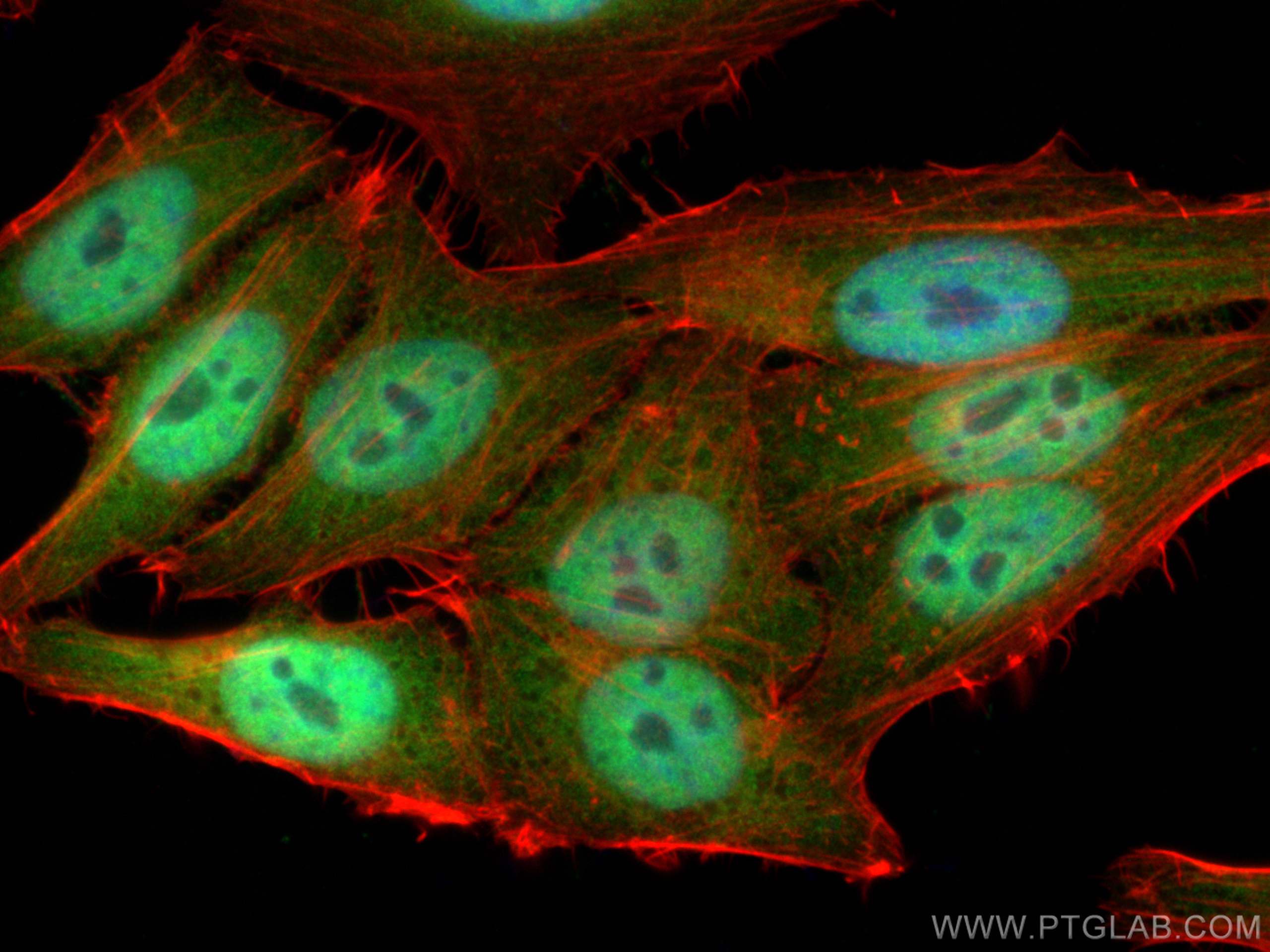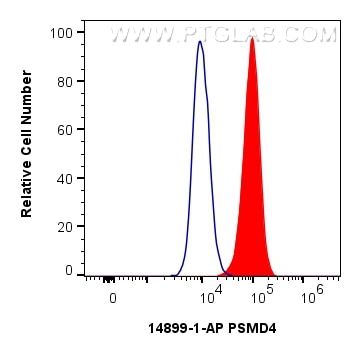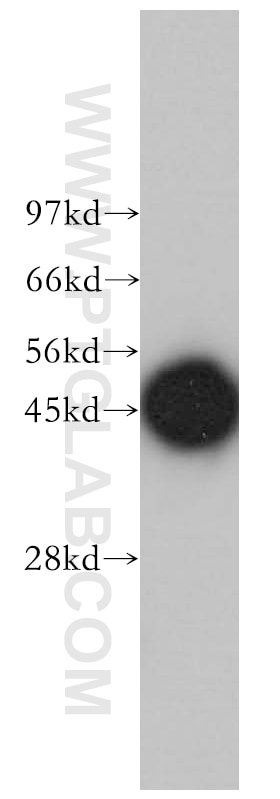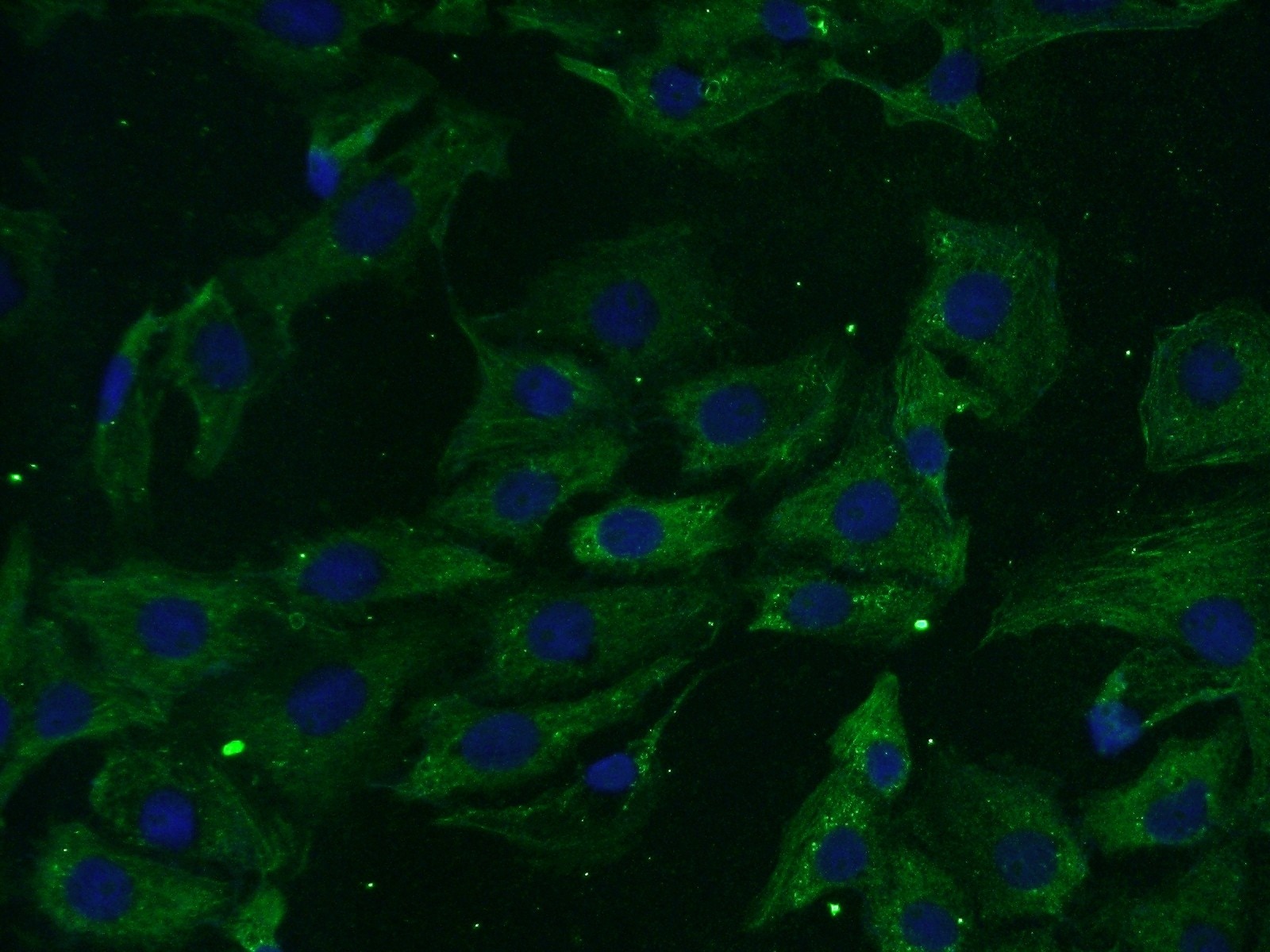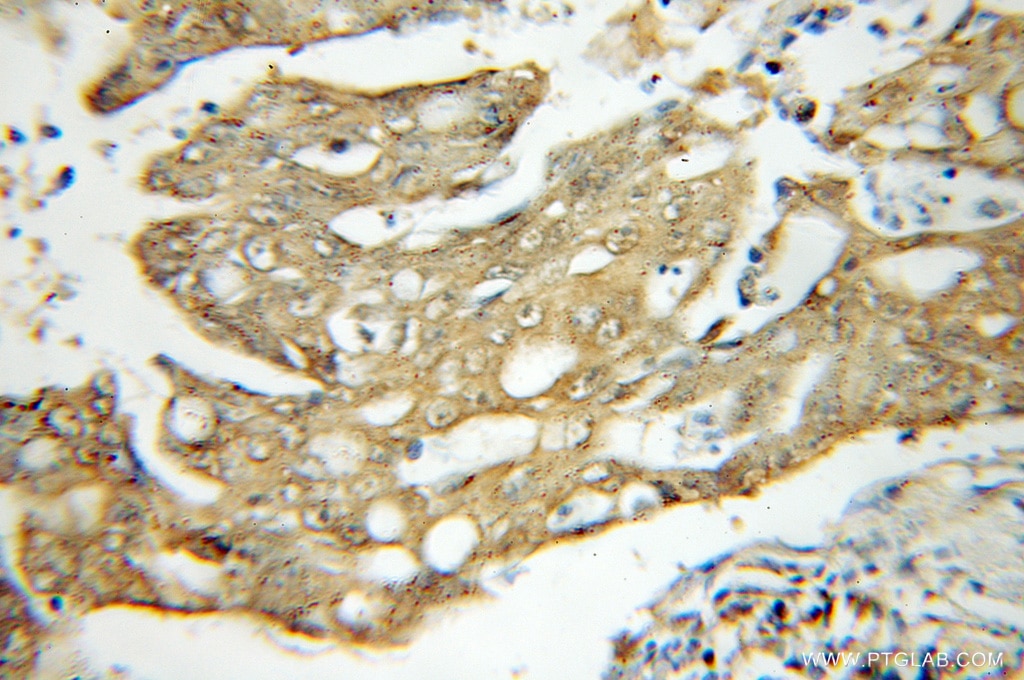- Phare
- Validé par KD/KO
Anticorps Polyclonal de lapin anti-PSMD4
PSMD4 Polyclonal Antibody for WB, IHC, ELISA, IF/ICC, FC (Intra)
Hôte / Isotype
Lapin / IgG
Réactivité testée
Humain, rat, souris
Applications
WB, IHC, ELISA, IF/ICC, FC (Intra)
Conjugaison
Non conjugué
N° de cat : 14899-1-AP
Synonymes
Galerie de données de validation
Applications testées
| Résultats positifs en WB | cellules Jurkat, cellules HeLa, cellules K-562, cellules NIH/3T3, cellules Raji, cellules RAW264.7, tissu splénique de rat |
| Résultats positifs en IHC | tissu de cancer du poumon humain, tissu testiculaire humain il est suggéré de démasquer l'antigène avec un tampon de TE buffer pH 9.0; (*) À défaut, 'le démasquage de l'antigène peut être 'effectué avec un tampon citrate pH 6,0. |
| Résultats positifs en IF/ICC | cellules HepG2, |
| Résultats positifs en FC (Intra) | cellules HepG2, |
Dilution recommandée
| Application | Dilution |
|---|---|
| Western Blot (WB) | WB : 1:5000-1:50000 |
| Immunohistochimie (IHC) | IHC : 1:50-1:500 |
| Immunofluorescence (IF)/ICC | IF/ICC : 1:50-1:500 |
| Flow Cytometry (FC) (INTRA) | FC (INTRA) : 0.80 ug per 10^6 cells in a 100 µl suspension |
| It is recommended that this reagent should be titrated in each testing system to obtain optimal results. | |
| Sample-dependent, check data in validation data gallery | |
Applications publiées
| KD/KO | See 3 publications below |
| WB | See 12 publications below |
| IHC | See 2 publications below |
| IF | See 2 publications below |
Informations sur le produit
14899-1-AP cible PSMD4 dans les applications de WB, IHC, ELISA, IF/ICC, FC (Intra) et montre une réactivité avec des échantillons Humain, rat, souris
| Réactivité | Humain, rat, souris |
| Réactivité citée | Humain, souris |
| Hôte / Isotype | Lapin / IgG |
| Clonalité | Polyclonal |
| Type | Anticorps |
| Immunogène | PSMD4 Protéine recombinante Ag6691 |
| Nom complet | proteasome (prosome, macropain) 26S subunit, non-ATPase, 4 |
| Masse moléculaire calculée | 41 kDa |
| Poids moléculaire observé | 50 kDa |
| Numéro d’acquisition GenBank | BC002365 |
| Symbole du gène | PSMD4 |
| Identification du gène (NCBI) | 5710 |
| Conjugaison | Non conjugué |
| Forme | Liquide |
| Méthode de purification | Purification par affinité contre l'antigène |
| Tampon de stockage | PBS avec azoture de sodium à 0,02 % et glycérol à 50 % pH 7,3 |
| Conditions de stockage | Stocker à -20°C. Stable pendant un an après l'expédition. L'aliquotage n'est pas nécessaire pour le stockage à -20oC Les 20ul contiennent 0,1% de BSA. |
Informations générales
PSMD4, also named as MCB1, AF or ASF, belongs to the proteasome subunit S5A family. PSMD4 is a 50-kD subunit of the regulatory complex of the 26S proteasome. It binds and presumably selects ubiquitin-conjugates for destruction. PSMD4 displays selectivity for longer polyubiquitin chains. It modulates intestinal fluid secretion. PSMD4 is exposed on the sperm acrosomal surface, a notion that was further supported by the binding of non-cell permeant, biotinylated proteasomal inhibitor ZL3VS to the sperm acrosome. It is involved in the sperm-ZP penetration during fertilization. (PMID: 20526895) This antibody is specific to PSMD4.
Protocole
| Product Specific Protocols | |
|---|---|
| WB protocol for PSMD4 antibody 14899-1-AP | Download protocol |
| IHC protocol for PSMD4 antibody 14899-1-AP | Download protocol |
| IF protocol for PSMD4 antibody 14899-1-AP | Download protocol |
| FC protocol for PSMD4 antibody 14899-1-AP | Download protocol |
| Standard Protocols | |
|---|---|
| Click here to view our Standard Protocols |
Publications
| Species | Application | Title |
|---|---|---|
Nat Neurosci Loss of nuclear UBE3A causes electrophysiological and behavioral deficits in mice and is associated with Angelman syndrome. | ||
J Cell Biol The transition zone protein Rpgrip1l regulates proteasomal activity at the primary cilium. | ||
Cancer Res The Ubiquitin-like Protein FAT10 Stabilizes eEF1A1 Expression to Promote Tumor Proliferation in a Complex Manner. | ||
Oncogene The degradation of p53 and its major E3 ligase Mdm2 is differentially dependent on the proteasomal ubiquitin receptor S5a. | ||
J Cell Sci S5a binds to death receptor-6 to induce THP-1 monocytes to differentiate through the activation of the NF-κB pathway. | ||
Mol Cell Proteomics Proteaphagy in Mammalian Cells Can Function Independent of ATG5/ATG7. |
